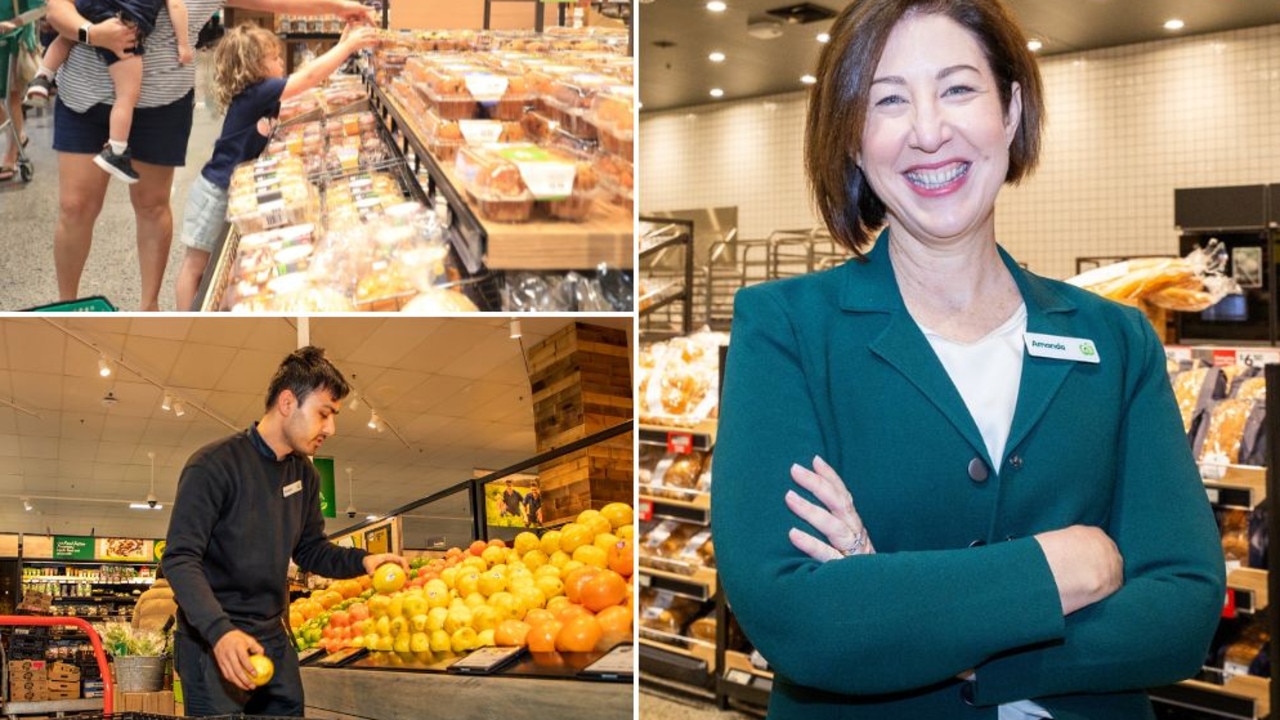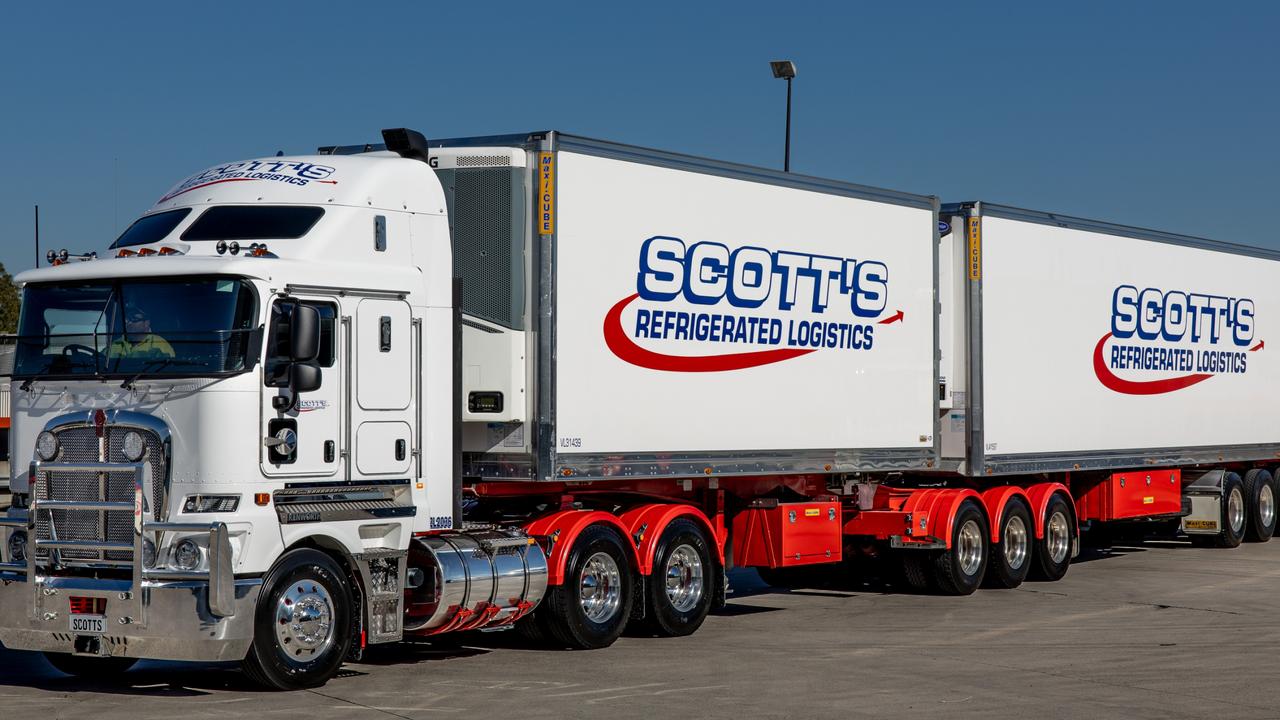Samsung sticks it rivals and fills the market vacuum for smart home appliances
A stick vacuum displaying calls and texts plus the fancy new AI way to automate your kitchen – welcome to Samsung’s biggest product launch of the year. Here’s what else it has in store.
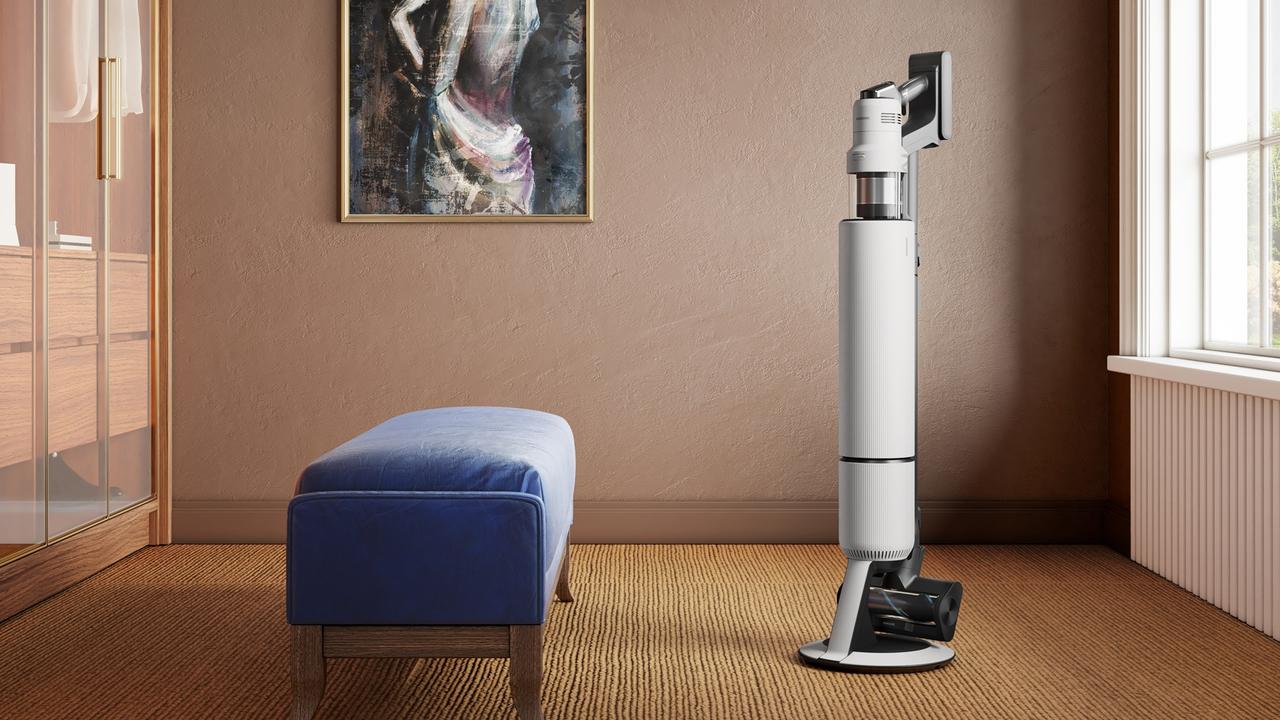
Business
Don't miss out on the headlines from Business. Followed categories will be added to My News.
Samsung is intensifying its battle with Dyson to seize the “stick vac” crown, launching a new appliance it says is not only more powerful but can display text messages and phone calls.
The Korean electronics titan has unveiled its newest cordless stick vac, the Bespoke AI Jet Ultra at its biggest appliance product launch for the year.
The vacuum has 400 watts of power – more than double Dyson’s flagship cleaner – and up to 100 minutes of battery life.
And to ensure people can stay connected – even over the roar of that powerful motor – its new LED panel can display text message and phone call alerts, similar to the way a smart watch does.
If that’s not enough, Samsung has turned its Bespoke AI Heat Pump Combo washer and dryer into a big phone, allowing people to make calls via its seven inch touchscreen.
Users can make or receive calls via Bluetooth calling. People can use their voice to respond to calls using their voice with any smartphone, even an Apple iPhone, via their Samsung SmartThings account. But calls can only be made with a Samsung Galaxy phone.

Samsung Australia new director of consumer electronics, Phil Gaut – who replaced long-serving executive Jeremy Senior last month – said the feature put “power in people’s hands”.
“SmartThings will work on any platform, so we’re not linked to one platform or another. But clearly, there is a whole fanbase out there of the Samsung mobile phone product,” he said
“That represents a great opportunity.”
Samsung is betting big on the $US1.35 trillion battle to control people’s homes by making devices smarter to perform more tasks remotely or autonomously.
Applied AI
Mr Gaut said consumer electronics were entering the era of applied artificial intelligence, in which the technology no longer just worked just in the background but has become more practical.
This can mean detecting when someone is watching sports or a movie on TV and automatically applying their favourite picture settings or knowing the exact contents of a fridge, notifying a user when ingredients are close to their expiry date and generating recipes to help eliminate food waste.
For Samsung, all this is performed via the 32-inch screen on its 809L Bespoke AI Family Hub and 615L AI Home side-by-side refrigerator.
Samsung showcased its fridge display technology at CES – the world’s biggest consumer electronics in Las Vegas last year – but at the time it was more about how people could watch TikTok or YouTube videos on their fridges.
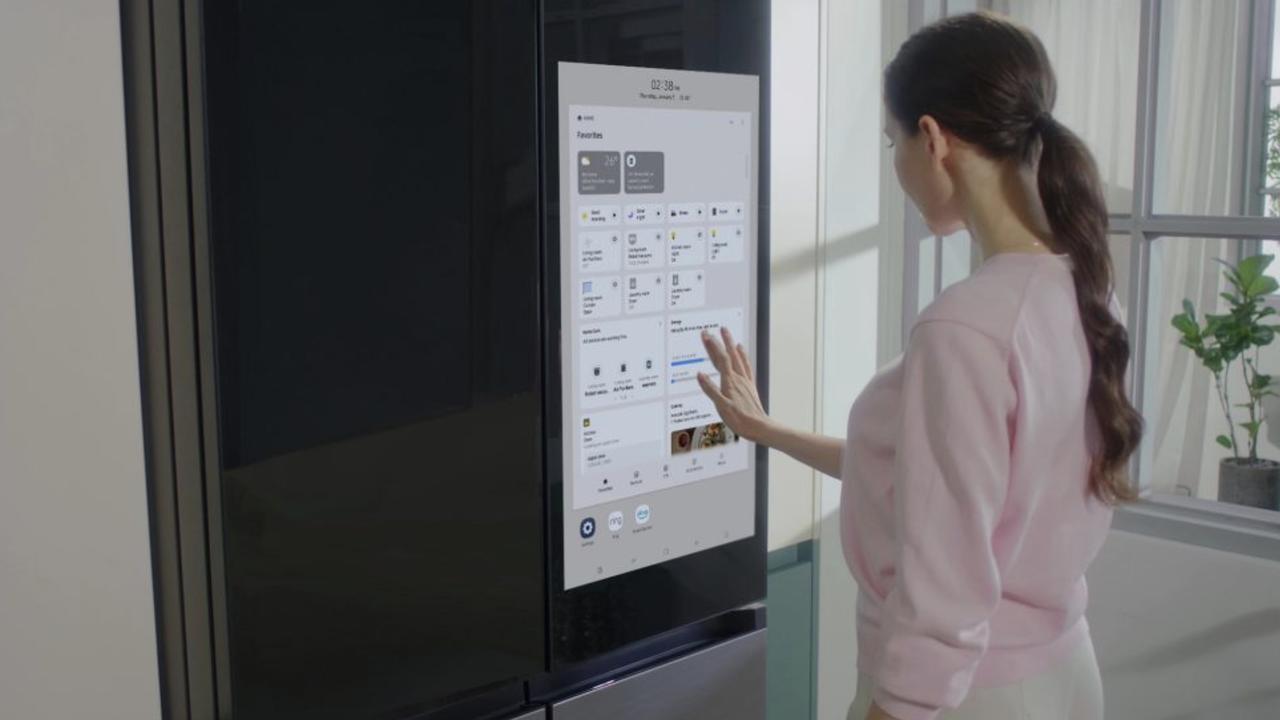
“Honestly, the 32-inch product has come along way from the first generation product,” Mr Gaut said.
“Some of the earlier iterations were almost like a tablet on the fridge to watch TikTok or something. It’s now completely integrated. You can listen to music, check your schedule, start to manage food.”
Eliminating food waste
Samsung expects food management to be a big winner. Its customer research has found that 46 per cent of Australians want to use AI to slash the 7.6 million tonnes of food wasted each year.
Mr Gaut said 87 per cent of Australians want to use the ingredients they already have in their kitchen, while 85 per cent were interested in the ability to generate a list of recipes based on the ingredients they already have.
The smart fridge can help with this task, and communicates with an oven to help cook a meal once a recipe is chosen. The smart appliances can even detect water leaks and display alerts – even on non-Samsung devices – like Philips Hue lights which can flash red if there is a fault.
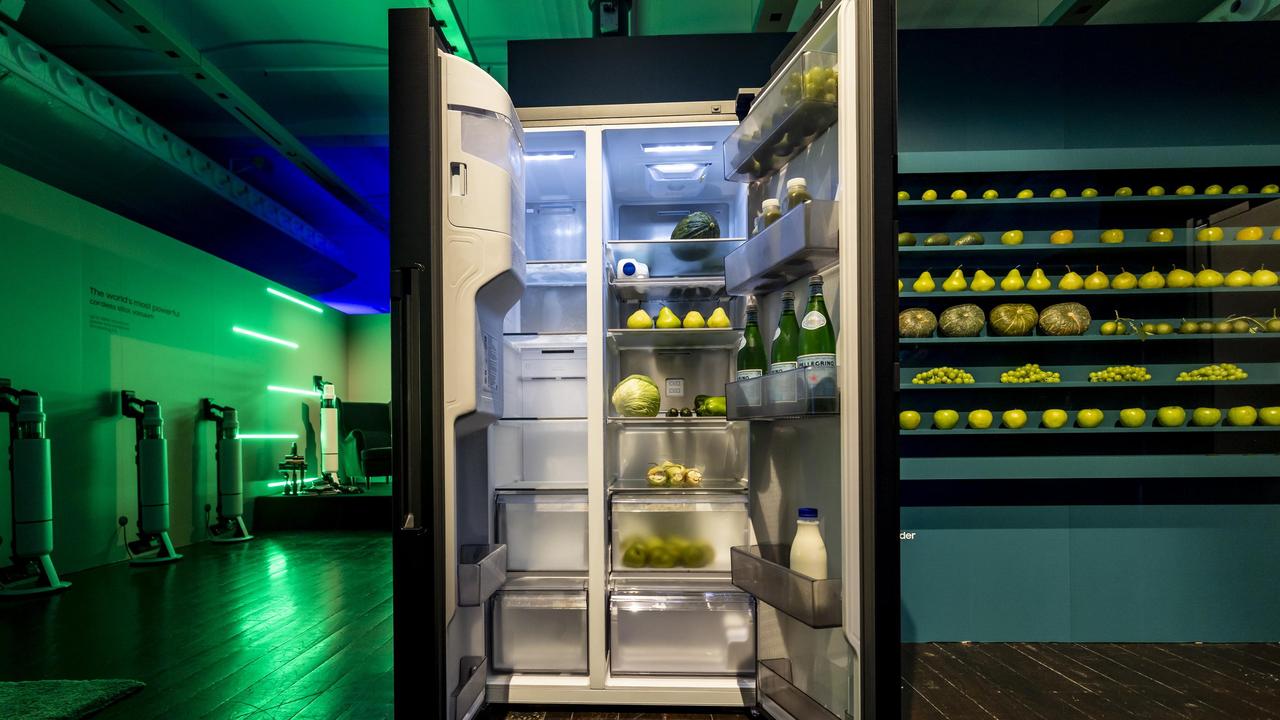
But while it looks great in theory – or even in a showroom – it can become expensive and overwhelming in the real world.
So how do people start making their homes smarter?
“The great thing about our platform is you can add products as and when you want to,” Mr Gaut said, citing his own family’s experience.
“We as a family started with a TV, that’s the typical start of the journey. Then we’ve added more devices whether it’s washing devices etc. So realistically, our journey as a family has been over a period of time, so there is never a moment where somebody is dumping all that tech on day one, unless you go and build a new house or something like that.”
Increased competition
But Samsung is facing competition from Google, Amazon and Apple, which also provide smart home platforms. Amazon has overhauled its Alexa voice assistant to allow people to converse with it more naturally to control appliances.
Samsung’s head of research and development for home appliances, Jeong Seung Moon, said while SmartThings can work with Alexa, Samsung’s own Bixby AI assistant was more knowledgeable about its products.
“Bixby makes more natural control over Bespoke AI appliances, for example, answering customers’ questions about how to use appliances or deal with any operational issues,” he said.
“Samsung is also working to expand connectivity with other brands through SmartThings, with the goal of providing more seamless home integration for users.”
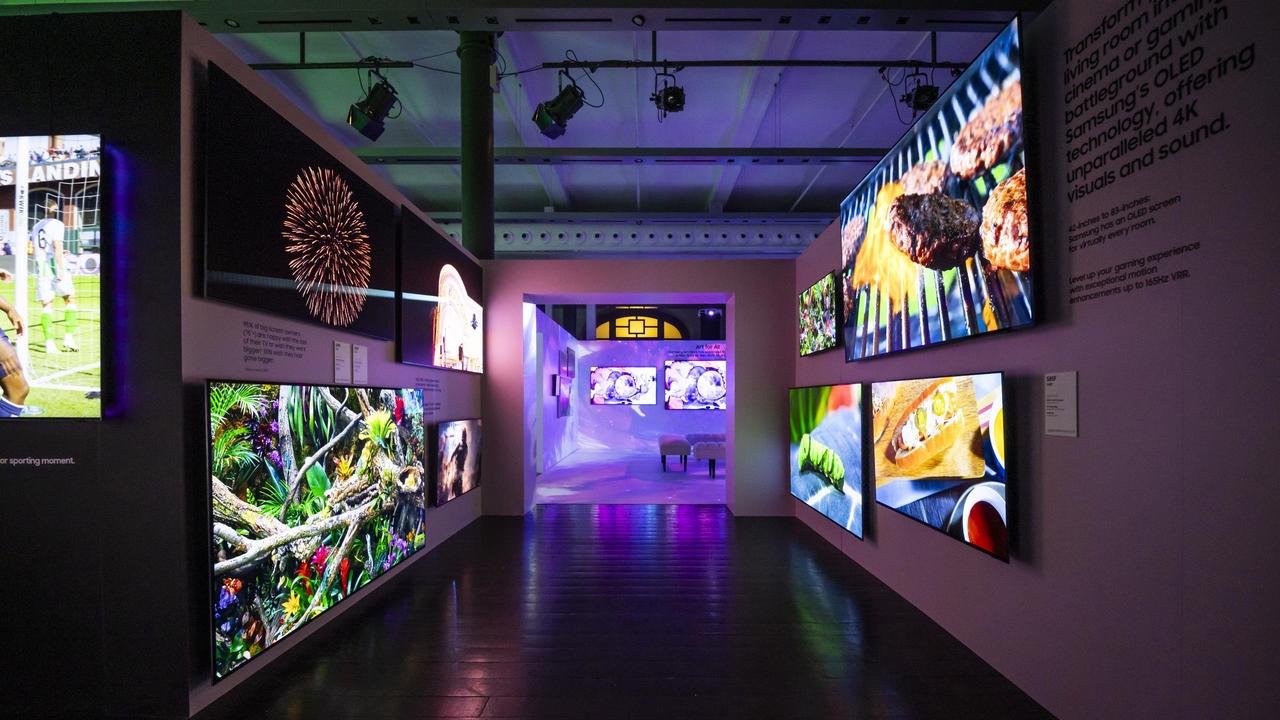
Brighter TVs
But it’s not just AI that is the main attraction in Samsung’s new products. A better antiglare TV screen featured on its flagship Neo QLED 8K series to better cope with sun-drenched Australian lounge rooms.
“It’s a real practical necessity,” Mr Gaut said.
“Actually, anti-reflective coating technology came from the B to B (business-to-business) side of our business, so where we’ve got screens in windows of high street shops, etc, where we need that reflective coating to mitigate outdoor sunlight – so that technology can be ported over, and yeah, to keep the curtains open.”
Originally published as Samsung sticks it rivals and fills the market vacuum for smart home appliances


